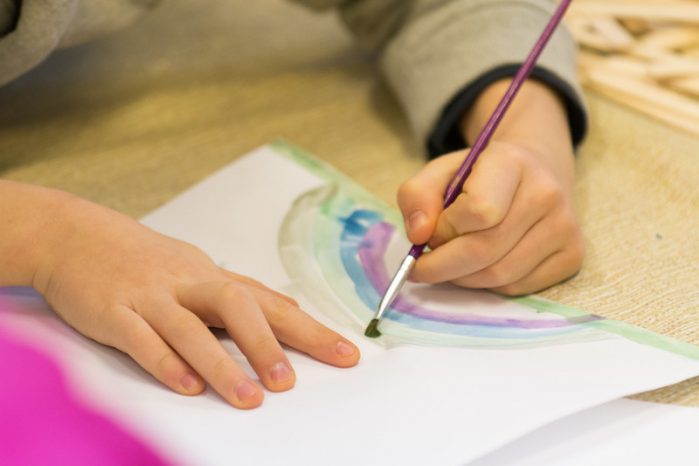Years before CTR was launched, I felt God was calling me in a new direction. I had been attending a non-liturgical church for some time before moving to Christ Church Hamilton, and within the first few months Fr. Liias began talking about planting a new church. I knew right then that this was why I had come: to be a part of this new church plant and, more specifically, a part of the children’s program.
At about the same time I began longing for a deeper connection with God, so I decided to meet with a spiritual director for guidance. I told her that I had been trying to read through the Bible in a year, and she suggested something I did not expect: “How about if you just read a sentence—or maybe just a word—and then just sit and listen?”
It was like a breath of fresh air.
Someone was actually giving me permission to not work so hard at trying to know God. He was already there—I just had to learn how to listen—and my spiritual director was going to help me do that. I realized then this was something I wanted for children, too.
I remember Fr. Brian calling me after his first week of training for Catechesis of the Good Shepherd (CGS), and he was so excited. Even with all his years of experience in children’s ministry, through the Catechesis training he discovered the delight of seeing God from a child’s perspective, of witnessing the child’s utter enjoyment of their Creator.
Through Catechesis:
“We try to help little children to become conscious of and attentive to the voice that is calling them by name. This voice calls them to be before it calls them to do. Put in biblical language, our aim is to help children become aware of the God of the covenant, of the God who is searching for us because he loves.
We try to help little children discover in wonderment the presence of a light that was given to us as a gift, of a mysterious and powerful seed within them which grows and leads towards more life, life in its fullness.
In contemplating these realities, the relationship with God is created and it is established on the foundation of enjoying God’s presence. Childhood is the time for the peaceful and serene enjoyment of God, the time for being in love. Being in love is the essential foundation for the child’s moral life” (The Good Shepherd and The Child, p 84).
When I joined Brian for the Catechesis training, I had this amazing feeling that I was ‘coming home.’ This was like spiritual direction for children!
This was an approach to spiritual formation that would give the children the tools to see the reality of religious life as a reality of their whole life!
In my letters to parents I often quote from the book The Religious Potential of the Child, written by one of the founders of CGS, Sofia Cavalletti:
“We should be aware that frequently we are not sufficiently serious with children…..we should not be afraid to approach the greatest themes with the youngest children (God is unfailing love, Christ is truly risen). It is necessary for us to concentrate on a few, essential themes, not only to respond to the children’s needs, but also to give them something that is able to grow along with them; that is, a vital nucleus that can open itself to ever widening horizons….
“As catechists in the atrium we are not teachers or storytellers, we present the essential elements of scripture and liturgy. Our sequence of presentation follows the rhythm of the life of the Church, which, according to the liturgical seasons, highlights various aspects of Christ’s life; that is, it traces the liturgical year, so that catechesis becomes an actual part of the life being lived by the Church” (p 51).
One of the truly unique aspects of the Catechesis approach is the attention it pays to the developmental stages of the child. Most approaches begin with adults deciding what they want the children to know about God and the Bible, and then dividing it between classes defined solely by the child’s grade.
Catechesis, instead, looks at each child holistically, paying attention to where they are cognitively, socially, physically, and emotionally. This is why we have four ‘atria’ (that is, rooms specially prepared for the children) separating children by age groups, rather than nine or ten classes separating children strictly by age. In each group (ages 0-3, 3-5, 6-8, and 9-12), the children are in similar developmental phases, but are all growing in individual ways. What that means is that each space needs to accommodate 12-18 children, and needs to be unique to each atrium.
The Catechists and I are so grateful for the commitment that was made to rent the portable classroom (our “Sheepfold”), and, as we outgrew the Sheepfold, the decision to build a wall to create a classroom on the parish hall stage. Now, as we continue to outgrow both, we are thrilled by the thought of how much space our new building will offer.
We often sing a song with the young children: “This is holy ground; God’s given us holy ground. God is in this place and so this ground is holy”.
Thank you, Jesus, for this space.


Recent Comments